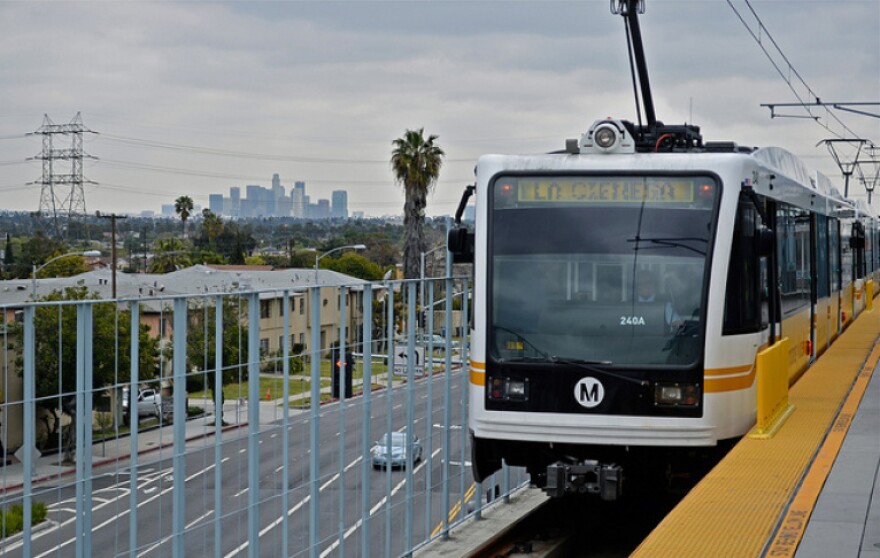Truth matters. Community matters. Your support makes both possible. LAist is one of the few places where news remains independent and free from political and corporate influence. Stand up for truth and for LAist. Make your year-end tax-deductible gift now.
Metro Is Killing Color Names On LA's Buses And Trains

Get ready to say goodbye to the Blue Line. When Los Angeles Metro's oldest rail line reopens in fall 2019 following an upgrade project, it'll be redubbed the A Line. And the rest of the agency's rail and bus lines are changing, too.
Last week, Metro's board of directors approved a plan to create a new naming convention for the transit system, using letters along with colors (guess they weren't fans of our newsrooms' suggestions).
The decision came after the agency's leadership said the current names for its rail and bus lines are "inconsistent" and make them difficult to navigate. Plus, Metro has run out of primary and secondary colors to use. So as it opens new lines, a color-only system would mean adding shades of colors, which could easily confuse riders.

Metro released this concept map of how the system could look in 2022, reflecting the naming changes. But with several projects slated to break ground over the next decade, riders could be hopping aboard the Q or S lines in the next several years.
The transit agency conducted more than 2,700 surveys across L.A. County regarding the change and had also considered naming some lines numerically or based on geography. But in the end, public input and Metro staff decided ABCs were easier than 123s.
The new names will be phased in over time and are set to be chronologically based on when the lines first opened. So the Red Line will become the B Line, the Green Line will be renamed the C Line and so on.
Metro staff estimates it will cost about $8.9 million to roll out the changes, which will include updating signage, maps and customer information, marketing, and public outreach. A breakdown of the projected costs can be found here.
Every line will get a new name, except the Gold Line. That route, which currently runs from East Los Angeles, north through downtown L.A. and east to Azusa, will eventually be split and absorbed by the future A (Blue) and E (Expo) lines when the Regional Connector Projectis completed in 2021.
Correction: A previous version of this story misstated date for the full reopeing of the Blue Line. Improvements to the southern segment were completed in May, but the line is expected to fully reopen in fall 2019. LAist regrets the error.







